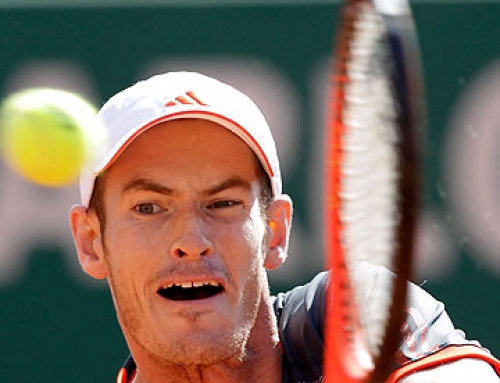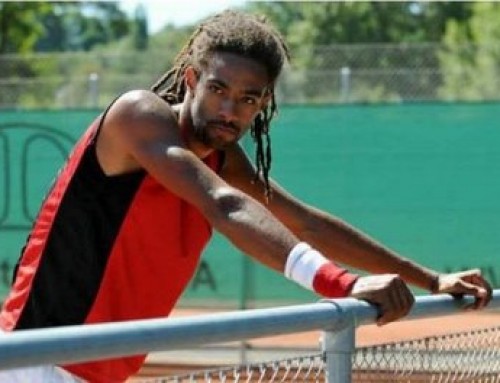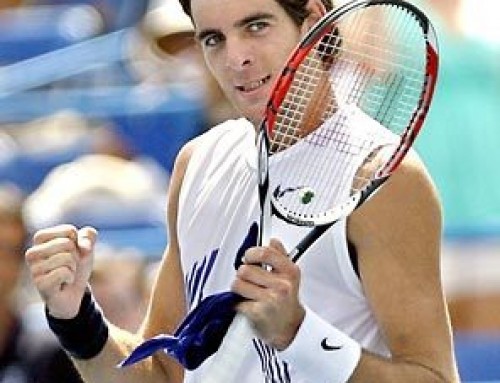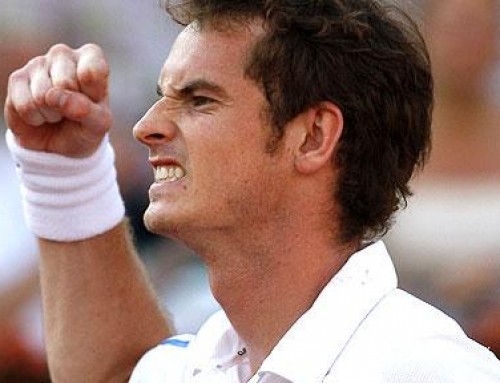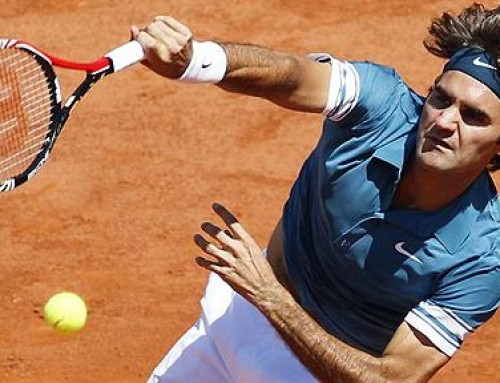Tennis was perhaps never so popular in the US as it was in the 1970s. The 1970s was a period of feminism and the fight for equal rights. No sporting event epitomized that more than the so-called Battle of the Sexes: Billie Jean King vs. Bobby Riggs.
On September 20, 1973, Billie Jean beat the 53 year old Bobby Riggs in straight sets. Once, one of the best players in the world, by 1973, Riggs was out of shape. Even so, his wily spins, drop shots and lobs had confounded then world number 1, Margaret Court, into straight set submission.
Billie Jean King knew she had to face Riggs to give legitimacy to women’s tennis. She was pushing for a renegade women’s tour that would pay the women more money. Court’s loss threatened the tour. King knew she had to not only play Riggs, but she had to beat him. Her win over Riggs not only gave rise to respectability of women in sports, it also gave tennis a huge boost, much like the Kerrigan attack gave figure skating greater visibility.
Beyond this event, tennis was helped by a trio of very popular and successful players. Jimmy Connors was the brash American, who hit flat shots and sharp returns. Connors was the Andre Agassi of his day. Like Agassi, he lacked a powerful serve, but was considered the best returner of his day. Unlike Agassi, Connors had a temper and this turned off fans who expected players to behave like gentleman.
Although Connors hit with two hands, he’s seen more of a product of his era. At the time, the top players were Australian or American. They tended to hit flat or with a modest amount of topspin, and attack the net to finish the point. You can think of Connors and McEnroe as two of the greatest of the American/Australian style of play.
The big difference with Connors and his predecessor was his attitude. Along with Ilie Nastase and later John McEnroe, Connors was the bad boy of tennis. He would argue with umpires. He would try to intimidate other players. Fortunately, public opinion improved with Connors. He was seen less as the bad guy, and more as the old man who still could compete with the new kids on the block.
As powerful as Connors’ brand of power tennis, it pales in comparison to today’s game. Winners from the baseline were still rare in the 1970s. Even a player as hard-hitting as Connors still worked his way to the net so he could put away a volley.
Connors, along with Borg and Evert, was responsible for a different revolution. These three players brought respectability to the two-handed backhand. Although players like Cliff Drysdale played with two hands a decade earlier, it was these three number 1 players who showed the second hand wasn’t a liability.
Who would have thought, thirty years later, the tables would have been turned, with one-handed backhands as rare as two-handers back in the 1970s.
As fiery hot as Connors was, Bjorn Borg was his opposite. The stoic Swede had an iconic look. Long blond hair, headband to keep it in place, hands taped up to prevent blisters, and his trademark beard that he grew during his many wins at Wimbledon. Where Connors was fiery, Borg betrayed no emotion. Win or lose, Borg kept the same placid demeanor. He was to men’s tennis as Chris Evert was to women’s tennis. Both were considered machines, that got back ball after ball, and their icy demeanor was a reflection of that steady play.
Borg brought a heavy topspin style to the game, a style that transformed the game. Borg wasn’t the first player to use topspin, but he may have been the most successful of his day, winning 6 French Opens. His success at Wimbledon brought clay court hitting into prominence. Players like Guillermo Vilas and Jose Luis Clerc lead to a huge group of Europeans that began to find success outside of clay. With the rise of hard courts and indoor tennis and the fading of grass tennis, topspin was becoming the essential tool to play top flight tennis.
Borg’s high topspin shots gave players fits. Instead of hitting shots from waist height, players had to adjust to shoulder height balls. Few players had good answers for these shots. The topspin came in handy for passing shots. Many players prior to Borg relied on the lob when someone came charging to the net, the flat pass being a hope and a prayer. But even Borg would have been surprised at the level of mastery of the passing shot in today’s game which has made the serve and volley game nearly obsolete.
The success of Borg’s topspin style was measured by his play against Connors. Connors won many of their early duals. But Borg’s supreme fitness meant he could run down ball after ball. When it came to who could hit more shots over the net, Borg almost always won that battle.
It’s almost ironic that at the height of tennis’s popularity in the US, tennis had become exceedingly dull. On clay, 20 and 30 shot rallies were common. These long rallies were not a staple of men’s tennis, but also of women’s tennis. Chris Evert, Tracy Austin, Andrea Jaeger all epitomized this steady get-the-ball-back play. Only a player like Martina Navratilova broke up the monotony by playing serve-and-volley.
Two players would begin to rise to the top, pushing tennis in wildly different directions. If Connors was brash and rude, John McEnroe was hot headed and tortured, convinced the umpires were blind. Every perceived missed call struck McEnroe like a thousand daggers. Even Connors was tired of McEnroe’s antics. If people forgave McEnroe for his outbursts, it was because he was a genius with the racquet.
Mac was an amazing touch artist, hitting feathery drop volleys and drops shot. He backed this with one of the toughest serves of the day. His lefty serve spun opponents out wide who struggled to return it and watch as Mac pounced to volley into the open court. There wouldn’t be another great volleyer until another stoic Swede, Stefan Edberg, defied the prototypical baselining Swede and charged the net to success.
Think of McEnroe as the epitome of the Aussie style of play. Get to net. Use continental grip for everything. It was no surprise that Rod Laver was his idol. He took this style of play to its pinnacle, combining his uncanny touch, with his ability to practically half-volley groundstrokes and drive them for winners. Despite his success, no one imitated him. He was considered a Mozart, so supremely skilled that mere mortals could not hope to imitate. And they didn’t, at least, not successfully.
But of all the pros of that era, the one that most influenced the way the men’s game would evolve was Ivan Lendl. Lendl lacked the good looks of Borg or Connors. Early in his career, he dressed in black. With deep sunken eyes, and a nasty habit of spitting between points, Lendl came across as Darth Vader, a player Brad Gilbert would later nickname the Terminator. Writers pegged Lendl as just another Borg, a steady baseliner from Czechoslovakia.
Little did these writers know that Lendl’s style would begin to define the modern game of tennis. Borg relied on fitness and an ability to retrieve and hit ball after ball to win. Connors had a flat style, but still went to net to finish off points. Lendl, however, was the game’s first modern power tennis player. The first guy to really pressure opponents from the baseline.
Oh sure, by today’s standards, his power game would look fairly passive. But consider this. Players in Lendl’s era simply didn’t hit winners from the baseline. Today’s players take a weak short ball and whip it for winners. In Lendl’s era, a short ball usually meant an approach shot to the net, sliced deep. Lendl showed you could hit winners from the baseline, and he did it with a tiny (albeit composite) racquet.
So many parts of Lendl’s game are now standard tennis vocabulary. Lendl’s forehand was his big shot, and he would frequently run around his backhand to hit his forehand. The inside-out forehand is common today, especially by Roger Federer, that it’s hard to imagine a time when few players would leave the court open to hit an inside out forehand. Most players did not treat the forehand as a shot to win a point on.
Lendl’s big shots were his down-the-line forehand and backhand. The flat shots of the day were not accurate enough to hit great passing shots. After Borg, Lendl became the best passer of his era. At one point, with McEnroe at the peak of his game, Lendl had beaten him 7 times in a row. He would pass McEnroe, and Mac would get scared, and tried to play baseline against Lendl, which often lead to a Lendl win.
Lendl also had a huge serve for a clay-courter. Indeed, despite his clay upbringing, he excelled on hard courts and indoors. It’s perhaps no surprise that his best results were at the US Open where he reached the finals a staggering 8 times in a row, from 1982 to 1989. He reached the year end Masters final, which used to be held in Madison Square Garden in New York City, 9 times in a row, from 1981 to 1989.
You might admire Lendl for the power game, but he did one thing that is nearly unheard of today. Lendl initially said he hated grass. Like Agassi, Lendl avoided grass early. But then he became obssessed with winning Wimbledon, since every great player had won on this surface.
In his quest to win Wimbledon, he tried to be a serve and volleyer. Lendl was not a serve and volleyer, but he thought this was the right way to win Wimbledon. After many years of focusing on Wimbledon, with Aussie Tony Roche as his coach, Lendl got to be an adequate volleyer. Indeed, based on his success on grass, you could call Lendl a grass court player even if fans of the day might disagree. He reached the semis 5 times, and the final twice. To imagine the magnitude of what he did, imagine Nadal becoming a serve and volleyer just to win Wimbledon (to be fair, he adjusted his game to play faster surfaces).
Lendl’s other contribution to the game, besides his big forehand, was his fitness. Many players simply played tennis to get better. Lendl looked to better dieting, to off-court workouts. He would invite promising players, including a young Pete Sampras, to hit with him.
Lendl was the first to switch racquets at every ball change to get a fresh set of strings. Indeed, he’d often reach in his bag, pull out a racquet, still wrapped in plastic, remove the plastic, and begin to play. Although commonplace now, this was very unusual in the early 80s.
Indeed, Cliff Drysdale couldn’t believe a player would grab what appeared to be a factory-fresh racquet and play with it. He thought, at the very least, they would ping the racquets against each other to hear their relative tension. Little did he know that Lendl was working with Warren Bosworth who personally strung his racquet to Lendl’s exacting standards.
For all of his fastidious preparation, Lendl’s Grand Slam record is one of the worst by percentage. He won only 8 of 19 majors. Early in his career, Connors had Lendl’s number, then McEnroe. Later in his career, it was Becker, Wilander, and Edberg. Some felt Lendl choked in finals, and indeed, he reached many finals before winning his first one.
Lendl’s best period came in the mid 80s where he won US Open three times in a row and the French twice. Overall, he’d win 3 French Opens, 3 US Opens, and 2 Australian Opens.
Lendl’s influence can be seen in the players that followed him. Boris Becker also had a huge forehand and a big serve. Many of the Bollettieri kids, especially Agassi, had huge forehands, but lacked great volleying skills.
To get a sense of the transformation, watch the 1982 Wimbledon final between Connors and McEnroe and the 1992 Wimbledon final between Agassi and Ivanisevic. The latter showcased big-time groundstrokes that make the former look like a walk in the park. It is fascinating that both Connors and McEnroe did reasonably well during this period where big graphite racquets became the norm. Their throwback styles gave these modern players fits, until the power was just too much for players like McEnroe to handle.
Nowadays, the men can hit winners from all over the court. The short ball is punished mercilessly, so much so that the serve and volley game is pretty much relegated to doubles. Players can now hit passing shots even on the most aggressive of approaches.
All of this modern tennis can be traced back to Ivan Lendl, who brought a new level of power to the game, a time that coincided with the racquet revolution, when wooden racquets gave way to graphite racquets. Lendl bridged the gap between the older style racquets and the newer ones, and spent most of his career using a racquet that was only a smidgen bigger than the racquets used in today’s game (he used a 72 sq in graphite racquet).
So when you see Federer and Nadal or you remember Sampras and Agassi, remember that this style of power play originated back in the late 70s with the Czech terminator, Ivan Lendl.



